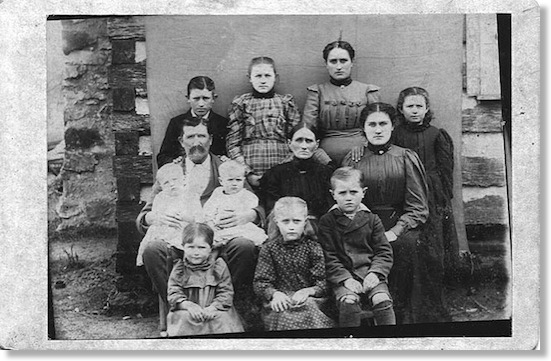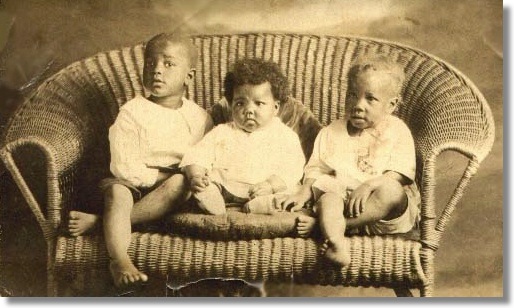Major Critics of Attachment Therapy
While Attachment Therapy/Parenting (AT/P) has been around, by one name or another, since the late 1960s and early 1970s, it hasn’t been subject to much public or academic scrutiny until the death of Candace Newmaker at the hands of Attachment Therapists in Evergreen, Colorado, in 2000.

AT/P’s profile has been raised of late, and the nature and magnitude of the problem has prompted many more professionals than before to voice criticism. While many are clinicians in private practice, others are academicians and leaders who have access to professional forums. (See the bibliography below for details.)
Earliest Critics
As late as the 1990s, only two people are known to have addressed the abuses of AT/P in the professional literature: Beverly James, who founded the James Institute in Hawaii, and Samantha Wilson of Truman State University in Missouri.
In 1994, Beverly James published her Handbook for Treatment of Attachment-Trauma Problems in Children. At that time she attacked coercive therapy, as “terroristic and abusive as well as dangerous.” She singled out the bogus claim made by AT/P practitioners that they “contract” with their patients or otherwise making a “therapeutic alliance” with their child victims. She approvingly quoted a terrorism expert from the 1970s: “Coercion, having obscured its brutal origins, is then at its most triumphant when the victims are compelled to experience submission as a voluntary decision. This is rape of the mind.”
Ms James’s critique was the only widely published criticism for a significant period of time and has published no other commentary since, though in 1998, she gave CBS News’ 48 Hours program an interview about the problems. Unfortunately, by 2000 she was endorsing the practices of one Attachment Therapist, who obscures the brutal nature of his own techniques.
In 1999, Samantha Wilson’s review of attachment disorders (not published until 2001), pointed out how the evidence “provides little validation for the use of such a controversial intervention.” She also made the important point that claims to reduce aggressive or delinquent behaviors (even if the evidence supported them) did little or nothing to answer the question, “Are children who receive this intervention able to form more stable attachments during adolescence or adulthood?”
Dr Wilson’s ultimate pronouncement on AT/P, while gently stated, was right on target, scientifically and ethically: “Until such time as holding techniques can be empirically validated to improve the condition of RAD without excessive stress to the child, parents may be well advised to consider other options in the treatment of a child with RAD.” This relatively early assessment continues to hold, four years on from when it was written. (There have been a few meta-analyses establishing the effectiveness for children of sundry conventional therapeutic approaches. For one, see Weisz et al.)
Though sharing many fundamental ideas, even Freudian psychoanalysts are appalled by Attachment Therapy. The prominent Swiss psychoanalyst, Alice Miller, taking off from principles elucidated in her books, For Your Own Good: Hidden Cruelty in Child-Rearing and the Roots of Violence and Breaking Down the Walls of Silence, attacked AT in personal correspondence. She told Canadian Jan Hunt, MS, Director of the Natural Child Project, that: “Force, the therapy implies, is used for the child’s own good, and the child will be rewarded and loved for his tolerance in letting it happen. He will come to believe that force contributes to his well-being and is ultimately beneficial. A more perfect deception and distortion of someone#&146;s perceptions is barely imaginable.”
Ms Hunt published Dr Miller’s concerns in an essay of her own in the Project’s web-based newsletter in September 2000. She added this assessment of AT/P: “Whether by a parent, therapist or stranger, physically overpowering a helpless child is wrong. Justifying it by calling it ‘love’ or ‘therapy’ is a violation of the child’s trust and understanding of life as he has come to know it. … How sad that something as lovely as having a child in our arms — when the desire is mutual — has been perverted into such a heartless practice.”
Jean Mercer
Leading the renewed discussion against AT/P has been the President of ACT’s Professional Board of Advisors, Jean Mercer, PhD. Dr Mercer is professor emerita of psychology at Richard Stockton College in Pomona, New Jersey, where she long taught child development. She also served as President of the New Jersey Infant Mental Health Association. In addition to a book on the Candace Newmaker case, Attachment Therapy on Trial, and an encyclopedia article about AT/P, she has also has had numerous pieces published about AT/P in the professional literature.
Alerting clinicians and others to AT/P’s existence and danger, Mercer has shown that AT/P has all the marked characteristics of an unvalidated therapy, including significant questions about safety and effectiveness. The use or recommendation of unvalidated therapies, she points out, should be avoided by ethical professionals, and similarly should be discouraged to patients and families.

Mercer’s opinions have been based in part on the realization that AT/P advocates are not frequently not candid about their use of coercive restraint. Their self-descriptions of their practices frequently obscure the inherently violent nature of what they do. Their characterization of “holding” as a a nurturing and safe environment is but one example of how they deliberately blur the lines. Similarly, Prof Mercer has repeatedly shown the utter absence of empirical evidence for the effectiveness and safety of AT/P, yet promoters continually talk to the public and to potential clients as if there was such evidence.
Mercer points out that attachment is a dynamic relationship, and it is that relationship that needs to be addressed in therapy. Thus, there are at least two actors (child and parent) who each have to work on the problems they are having. AT/P, however, assumes that the problem rests entirely with the child and has to be overcome entirely by treating the child. Furthermore, by selecting the child for treatment, AT therapists have focused on the person in the relationship least able to comprehend and deliberately change. As one of the APSAC authors below has pointed out, “Most children and adolescents are overwhelmed and confused by discussions of their early experiences of maltreatment.”
Most telling of all, Mercer has repeatedly exposed the contradictions between the approaches and techniques used in AT/P and what has been discovered through valid and lengthy academic work and clinical research about child mental and emotional development, about parent-child attachments, and about how the human mind reacts to trauma. Put simply, if AT/P approaches are valid, then nearly everything and everyone who has published research in the area over the last half-century or so is necessarily wrong.
Mercer has addressed the shortcomings of AT/P’s largest organization — Association for Treatment and Training in the Attachment of Children (ATTACh). In addition to promoting AT/P, ATTACh has been trying to establish itself as a legitimate, freestanding professional organization. As Mercer pointed out in an Open Letter to ATTACh’s president, the group’ efforts are marked by not having done all the things expected of such an organization.)
APSAC
Mercer’s concerns about AT/P may have been the first to re-open the debate over its practices, but her concerns received independent confirmation when an influential watchdog group, the American Professional Society on the Abuse of Children (APSAC), also took on the issue of AT/P in 2002. William Friedrich, a psychiatrist at the Mayo Medical School and Clinic, guest edited two issues of the APSAC Advisor which presented separate articles, by professors Matthew Speltz of the University of Washington Medical School, Rochelle Hanson of the Medical University of South Carolina, Alan Sroufe of the University of Minnesota, and Martha Erickson, taking AT/P to task. (Joining them were clinicians Lucy Berliner and Rosie Oreskovitch, both of Washington State, the latter with the Department of Human Services there.) These articles surveyed the range of problems with AT/P, from theory to practice.
Calling it an “uninformed therapy,” the APSAC authors start by unequivocally showing that AT/P has no basis in the highly regarded Attachment Theory developed by John Bowlby and refined by Mary Ainsworth. Though AT/P proponents actively cite and reference Bowlby and Ainsworth as the starting point for what they believe, most of what they say is contrary to what Attachment Theory actually holds to be true.
In truth, AT/P is shown to be derived from the discredited “hydraulic view” of negative emotions, where therapists seek to release “bottled up” emotions in a client, so they experience a catharsis and so improve their behavior. As Samantha Wilson had earlier observed, there is no theoretical necessity that the improved behavior will manifest as better attachment.

Next, AT/P practitioners engage in interventions that other professionals would not use. First, many of these approaches are contra-indicated for the diagnoses that other professionals would make. Second, these approaches are inconsistent both with mainstream attachment theory and scientific research. Third, AT/P treatment goals invariably seek to change the child, rather than the relationship through the parent (as has also been pointed out by Mercer — see above).
Then there is the risky nature of AT/P. There are significant physical risks, as indeed there have been abuses and even deaths associated with AT/P practices. AT/P procedures also carry a high risk of psychological damage to a child. Weighed against the negligible (or at least unobservable) benefits of AT/P, there is little basis for an ethical professional to offer AT as the treatment of choice for any child. There is even less basis, considering that there are empirically-supported alternatives available for effective treatment of the AT/P-targetted population. (See Weisz et al. meta-analysis.)
Finally, parents and others need to know that there are acceptable alternatives to AT/P. While AT/P purports to change a child’s basic temperament or personality, in fact there is no known way to do this. Yet there are effective means of treating many of the conditions that children mistakenly diagnosed with RAD may actually have. And more, there are also empirically validated “effective technologies for stabilizing, managing, and containing children’s antisocial and violent behavior, reducing family conflict, improving children’s social skills and their ability to regulate emotion, improving school adjustment and achievement and peer relationships, and reducing anxiety and fear in children who have been traumatized by early experiences.
The APSAC articles prompted some response from the AT/P community which were notable in at least one respect: practitioners denied that they were actually doing what they were accused in these articles of doing, particularly the use of coercive restraint. (In reply, the APSAC authors cited their sources and stood by their prior statements.) This is similar to the public protests made by proponents of AT/P when legislative bodies consider outlawing the use of coercive restraint in therapy: they deny that this is what they do. Yet, the wonder is why they are concerned about the restrictions if they are not doing what is proposed to be restricted.


